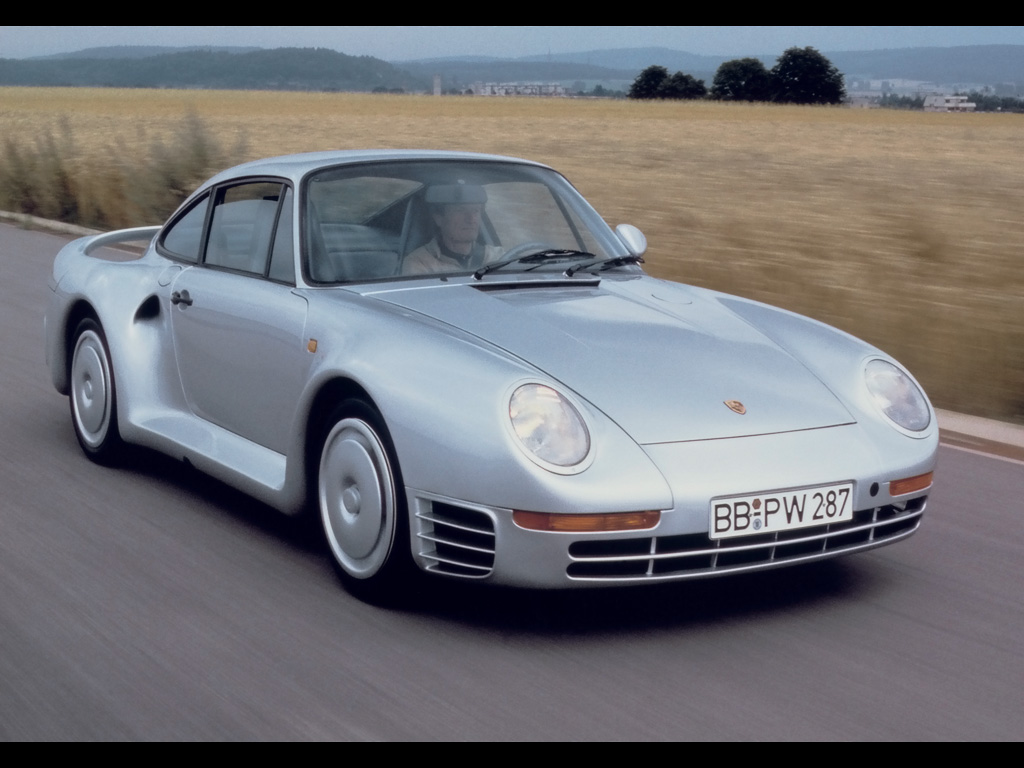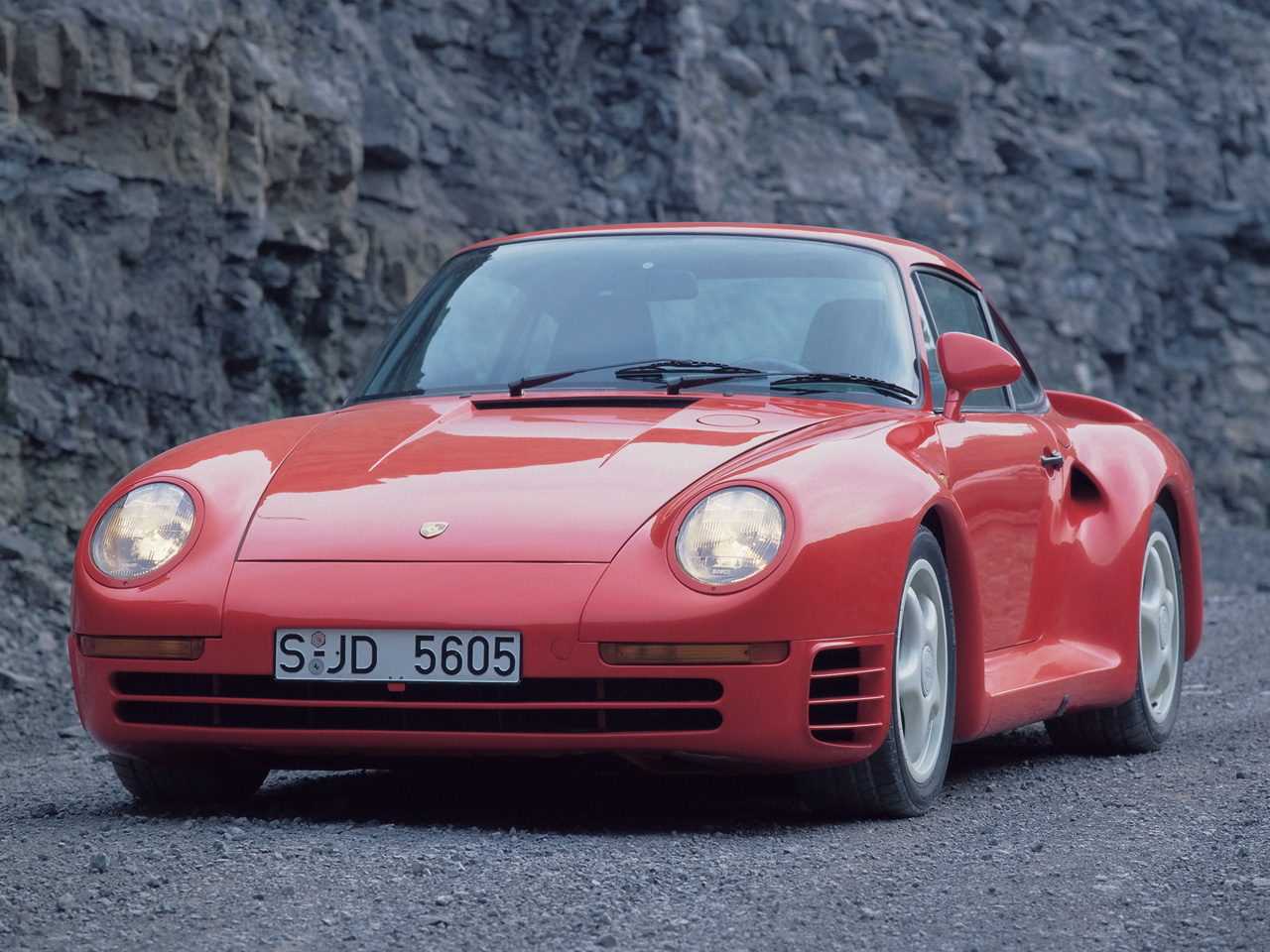Porsche 959
|
Price |
approx $230,000 |
Production |
approximately 250 | ||
|
Engine |
2.85 liter boxer-6 |
Weight |
2917 lbs | ||
|
Aspiration |
sequential twin turbos |
Torque |
369 lb-ft @ 5500 rpm | ||
|
HP |
450 hp @ 6500 rpm |
HP/Weight |
6.5 lbs per hp | ||
|
HP/Liter |
157.9 hp per liter |
1/4 mile |
11.8 seconds | ||
|
0-60 mph |
3.6 seconds |
Top Speed |
198+ mph |
Originally designed for Group B racing, the blueprint for the 959 gradually shifted to becoming the ultimate road car that Porsche could design and produce. The project got underway in January of 1983, and some 250 or so cars were built from 1986 through 1988.
Some highlights of the 959 were AWD; the heavy use of Kevlar, Nomex, aluminum, and carbon fiber for weight savings; automatic ride height adjustment; water-cooled 4 valve heads; and sequential turbocharging. But perhaps the standout feature of the Porsche 959 was its high price and over-the-top approach to ultimate performance. In many ways, the 959 is the spiritual ancestor to the many extreme supercars that followed it, such as the Ferrari F40, Jaguar XJ220, McLaren F1, and Bugatti Veyron.
Despite its high price, Porsche was said to have lost substantial amounts of money with every car sold. But in retrospect, the 959 may have proved to be an outstanding investment. Extremely popular as an aspirational vehicle among sports car enthusiasts of its day, the 959 served as an excellent halo vehicle for the entire Porsche brand. In addition, the technological advances made during the 959's development helped to ensure the continuing viability of the 911's rear-engine design. - SW



